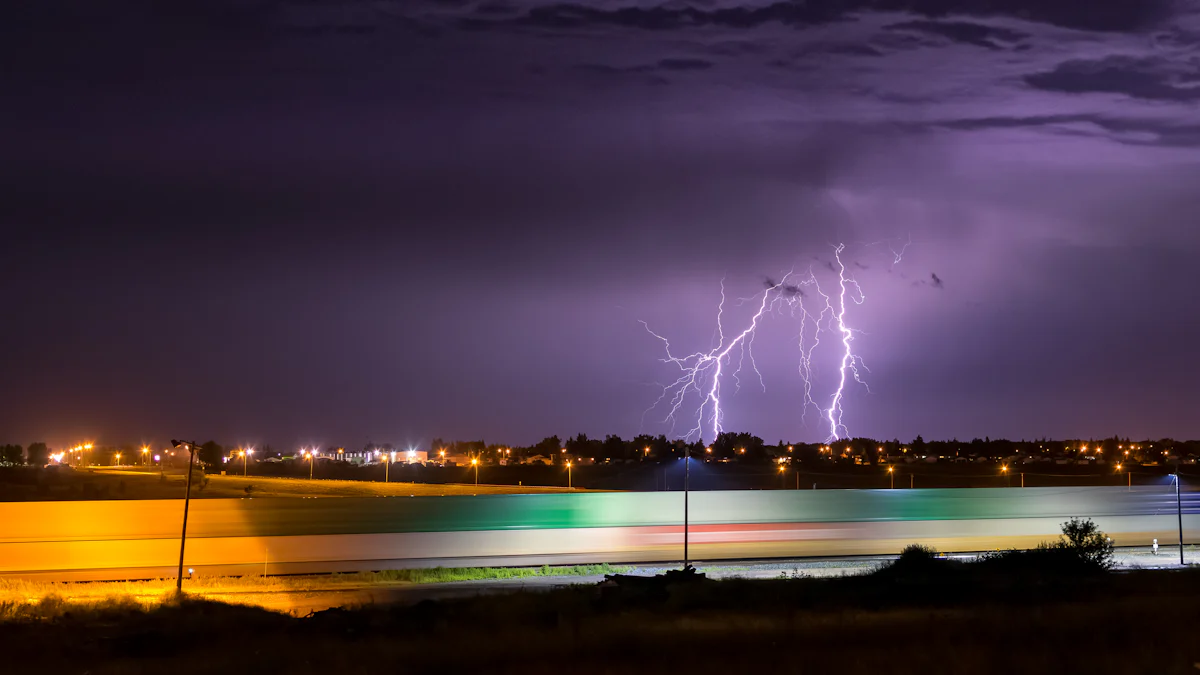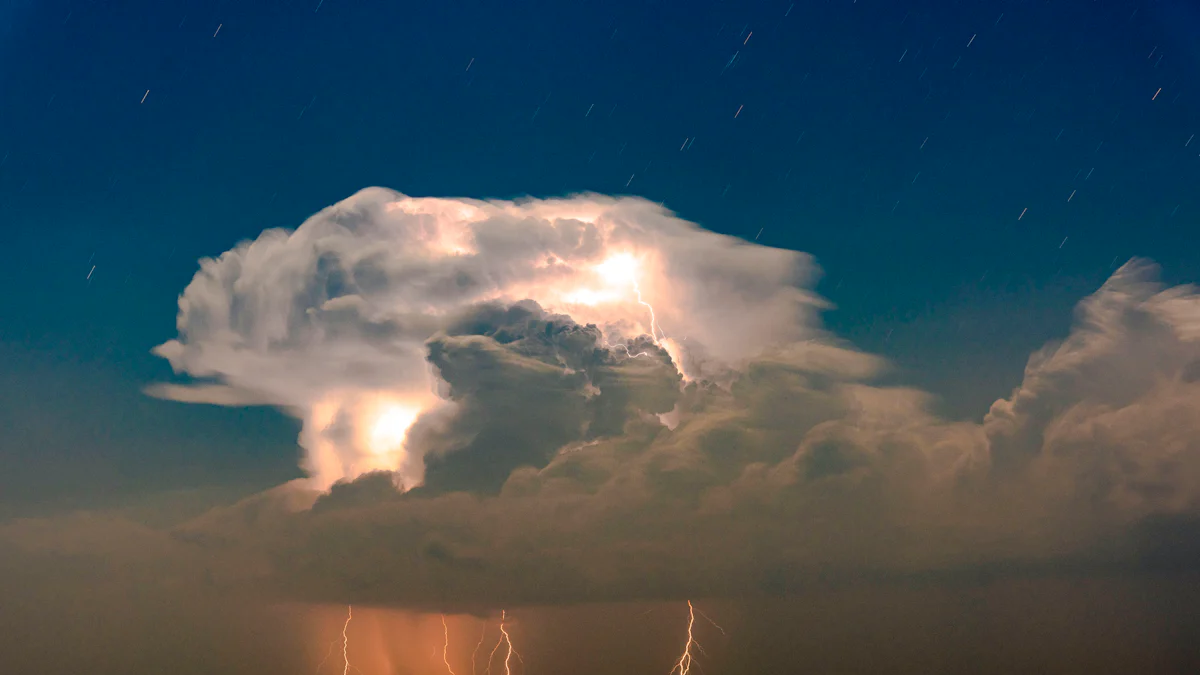
Vienna recently faced severe weather events that disrupted daily life. The storm, known locally as Unwetter Wien, brought heavy rainfall and hail. A record-breaking 112 liters of rain per square meter fell during the storm. Staying informed about weather alerts can help you prepare and stay safe. This blog post aims to provide valuable information about these recent storms. Understanding the impact of such weather can enhance your awareness and readiness for future events.
Unwetter Wien: Overview of Recent Storms

Timeline of Events
Initial Storm Warnings
Meteorologists issued storm warnings for Vienna. The warnings predicted heavy thunderstorms with hail and strong winds. Residents received alerts about potential flooding in low-lying areas. Emergency services prepared for a high volume of calls. Authorities urged citizens to stay indoors and secure outdoor items.
Progression of Storms
The storms began with intense rainfall. Alsergrund, Döbling, Brigittenau, and Floridsdorf experienced severe weather. Flooding affected cellars and underpasses. The fire department responded to over 300 incidents. Rainfall reached peak values of 66 liters in half an hour. The storm threatened to break the all-time rainfall record.
Meteorological Analysis
Weather Patterns
The storm system developed rapidly. Warm air masses collided with cooler fronts. This collision created unstable atmospheric conditions. Thunderstorms formed as a result. Hail and squalls accompanied the rain. Meteorologists noted the unusual intensity of the storm.
Contributing Factors
Several factors contributed to the severity of Unwetter Wien. Climate change has increased the frequency of extreme weather events. Urbanization in Vienna has reduced natural drainage areas. Concrete surfaces prevent water absorption. This leads to more significant flooding during heavy rains. Experts emphasize the need for improved infrastructure planning.
Impact on Vienna

The recent Unwetter Wien has left a significant mark on the city. The storm’s impact on infrastructure and the community response highlights the challenges faced during such extreme weather events.
Infrastructure Damage
Transportation Disruptions
The storm caused severe disruptions to Vienna’s transportation network. Floodwaters inundated roads, making them impassable for vehicles. Public transport services, including buses and trams, faced cancellations and delays. Many commuters experienced long wait times. Emergency crews worked tirelessly to clear debris and restore normalcy. The situation mirrored past events like the Catastrophic Flash Floods in Slovenia, where transportation systems also suffered massive disruptions.
Power Outages
Unwetter Wien led to widespread power outages across various districts. Strong winds and falling trees damaged power lines. Many households and businesses experienced blackouts. Utility companies dispatched repair teams to address the issues promptly. The outages underscored the vulnerability of urban infrastructure during severe weather. The need for robust and resilient systems became evident.
Community Response
Emergency Services
Emergency services played a crucial role during Unwetter Wien. Firefighters and rescue teams responded to over 300 calls. Crews assisted in evacuating residents from flooded areas. Boats were used to reach stranded individuals. The swift response minimized casualties and property damage. The efforts mirrored those seen in Slovenia, where emergency services were vital in managing the crisis.
Public Safety Measures
Authorities implemented several public safety measures to protect residents. Alerts advised people to stay indoors and avoid travel. Community centers opened as temporary shelters for those displaced by the flooding. The city’s response highlighted the importance of preparedness and effective communication. The lessons learned from Unwetter Wien can guide future strategies for dealing with extreme weather.
Vienna’s experience with Unwetter Wien emphasizes the need for ongoing adaptation and resilience planning. Urban densification impacts the microclimate, as seen in studies on Vienna’s urban planning. Improved infrastructure and community awareness can mitigate the effects of future storms.
Safety Precautions and Recommendations
Preparing for Future Storms
Emergency Kits
You should prepare an emergency kit to ensure safety during storms. The kit should include essential items like non-perishable food, water, and a flashlight. Batteries, a first-aid kit, and a battery-operated radio are also crucial. These items provide basic needs when power outages occur. You can also include personal documents and medications in the kit. A well-stocked emergency kit ensures readiness for any storm.
Safe Shelter Practices
Finding safe shelter during a storm is vital. You should stay indoors and away from windows. Secure doors and windows to prevent damage from strong winds. Basements or interior rooms offer the best protection. Avoid using electrical appliances during thunderstorms. Safe shelter practices reduce the risk of injury during severe weather.
Staying Informed
Reliable Weather Sources
Staying informed about weather conditions requires reliable sources. You should follow local news channels for updates. Weather apps on smartphones provide real-time alerts. National meteorological services offer accurate forecasts. These sources help you stay aware of changing weather patterns. Reliable information allows you to make informed decisions during storms.
Community Alerts
Community alerts play a crucial role in storm preparedness. Local authorities issue warnings through various platforms. You should sign up for text alerts from emergency services. Social media platforms provide quick updates on storm developments. Community centers often share information about available shelters. Engaging with community alerts enhances your safety during storms.
Scientific Research Findings:
- Investing in Disaster Prevention and Preparedness in Europe highlights the economic benefits of disaster prevention. The study shows that investing in flood management measures can save costs.
- Climate Change Impact on Urban Habitats emphasizes the need for adaptation in urban areas. Green infrastructure helps mitigate flooding effects.
The recent Unwetter Wien event underscores the importance of these precautions. You can protect yourself by preparing for future storms and staying informed. Safety measures and community engagement enhance resilience against extreme weather.
The recent storms in Vienna have left a profound impact on the city. The heavy rainfall and hail disrupted daily life and highlighted vulnerabilities in urban infrastructure. Preparedness remains crucial for minimizing damage during such extreme weather events. You should invest in disaster prevention measures. These investments can save costs in the long run. Staying informed through reliable sources ensures safety and readiness. Early warning systems and community alerts play a vital role in rapid response. You must prioritize safety and preparedness to enhance resilience against future storms.
 Press Coffee
Press Coffee